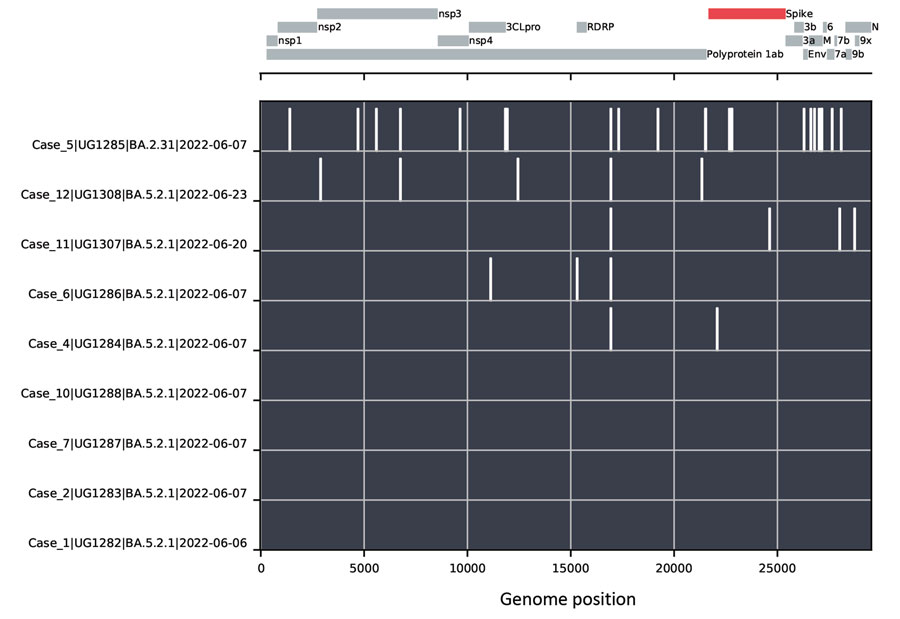Volume 29, Number 1—January 2023
Research Letter
SARS-CoV-2 Omicron BA.5 Infections in Vaccinated Persons, Rural Uganda
Figure

Figure. Nucleotide changes between SARS-CoV-2 genomes from a cluster of COVID-19–positive persons in Kyamulibwa, Kalungu District, rural Uganda. The lower portion of the chart shows nucleotide differences from the case 1 genome, plotted as white bars. The absence of bars in the BA.5.2.1 genomes from cases 1, 2, 7, and 10 indicates identical sequences. Case 5 was determined to be lineage BA.2.31, and cases 4, 6, 11, and 12 genomes demonstrated virus variants of lineage BA.5.2.1 distinct from the genomes from cases 1, 2, 7, and 10. A schematic of the SARS-CoV-2 genome is shown in the top portion of the chart, with protein coding regions marked.
Page created: November 04, 2022
Page updated: December 22, 2022
Page reviewed: December 22, 2022
The conclusions, findings, and opinions expressed by authors contributing to this journal do not necessarily reflect the official position of the U.S. Department of Health and Human Services, the Public Health Service, the Centers for Disease Control and Prevention, or the authors' affiliated institutions. Use of trade names is for identification only and does not imply endorsement by any of the groups named above.